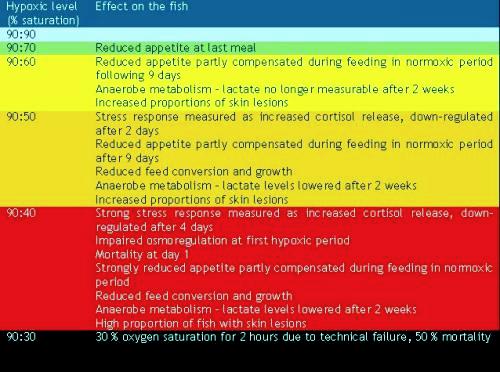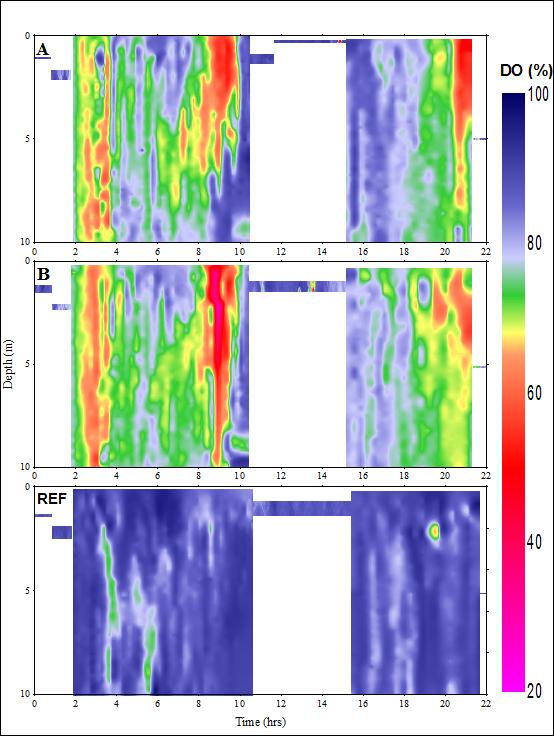|
Cage Environment
The objective is to develop improved standards for oxygen management in marine net cages to secure fish welfare and efficient production
Background: Fluctuating hypoxia is commonly seen in commercial salmon farming today while its impact on the fish is largely unknown. The hypoxia has been related to the oxygen consumption of the fish and the flow through the cages but an extensive description of the dynamics, and in particular the effects of the fish are lacking. The overall aim of the project is to describe the effects of fluctuating hypoxia on the fish, the dynamics of the oxygen consumption and flow through the cages and finally improve oxygen management in sea cages. The project utilises a wide range of research tools; experimental cage environmental lab and commercial cages; tank environmental lab; experimental flow through tanks; towing tanks. Egersund Net has provided some of the nets used in experiments. The project includes several subtasks. Subtask 1. Tank trials on fluctuating hypoxia: This study investigated the performance and rate of habituation and acclimation of Atlantic salmon subjected to repeated fluctuating hypoxic levels ranging from 40-70% saturation by looking at appetite, stress indicators and oxygen uptake (example of results is given in Table 1). Table 1. Effects of 2 hours of hypoxia 4 times daily on postsmolt Atlantic Salmon grown in seawater tanks at 16°C .
Subtask 2. Field trial at tank environmental lab and commercial site – flow and oxygen inside cages: the field measurments showed a distinct effect of fish schooling behaviour on reduction of the water flow, oxygen level and change in current direction compared with the current outside the cage. During the trial at the commercial site in autumn alarmingly low levels of oxygen (below 30%) were registered several times every day (see Figure 1). Figure 1. Dissolved oxygen levels (DO %) at two different positions within the seacage (A, B) and a reference point (REF) outside the cage. Time 1 represent 8 PM. Oxygen levels reached below 30 % saturation certain periods during the night when the water flow was weak.
Subtask 3. Velocity reduction through a net panel with different porosity: Net panels with different porosities were mounted in the flume tank in Hirtshals and force together with water flow in front of and behind the panel was measured. These data were used to make a 3d simulation of the effects of net panels on the flow. The simulation model will be further developed using cage models in the flume tank. The overall aim is to use the model to test different cage configurations to improve the position of the cages at the farms. Subtask 4. Flow field around a circular cage stocked with salmon: Water velocities were measured using single-point current meters around an empty and stocked circular sea cage. The fish showed behaviour typical of caged salmon, forming circular schools with most fish swimming in the same direction. Preliminary analyses indicate 1) an horizontal outward flow from the centre of the cage in the depth of the main biomass of fish, 2) a negative vertical flow in front of the cage and a positive vertical flow behind the cage. The caged fish therefore appear to have an influence on the flow previously not described. |
Researchers
Frode Oppedal, Mette Remen, Rolf Erik Olsen, Thomas Torgersen, Jannicke Vigen, Jason Bailey and Jan Aure (Institute of Marine Research)
Industry Partners
Egersund Net AS |


